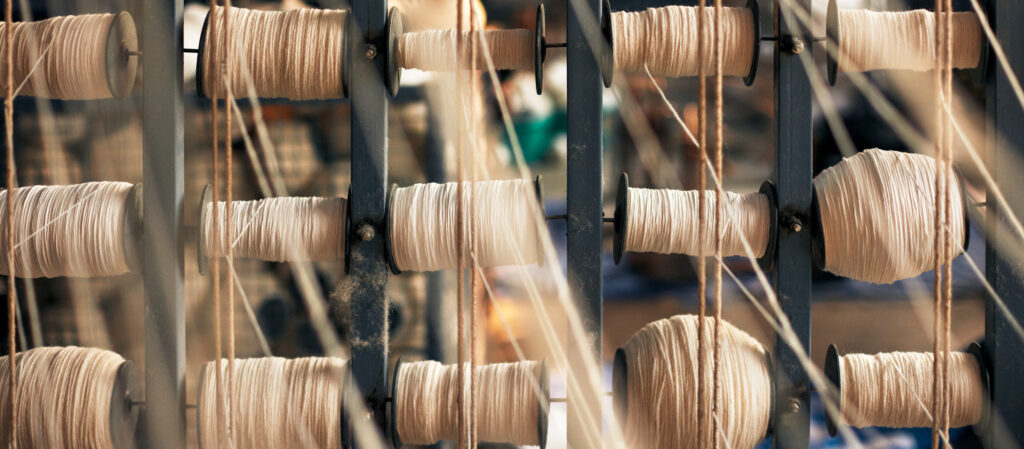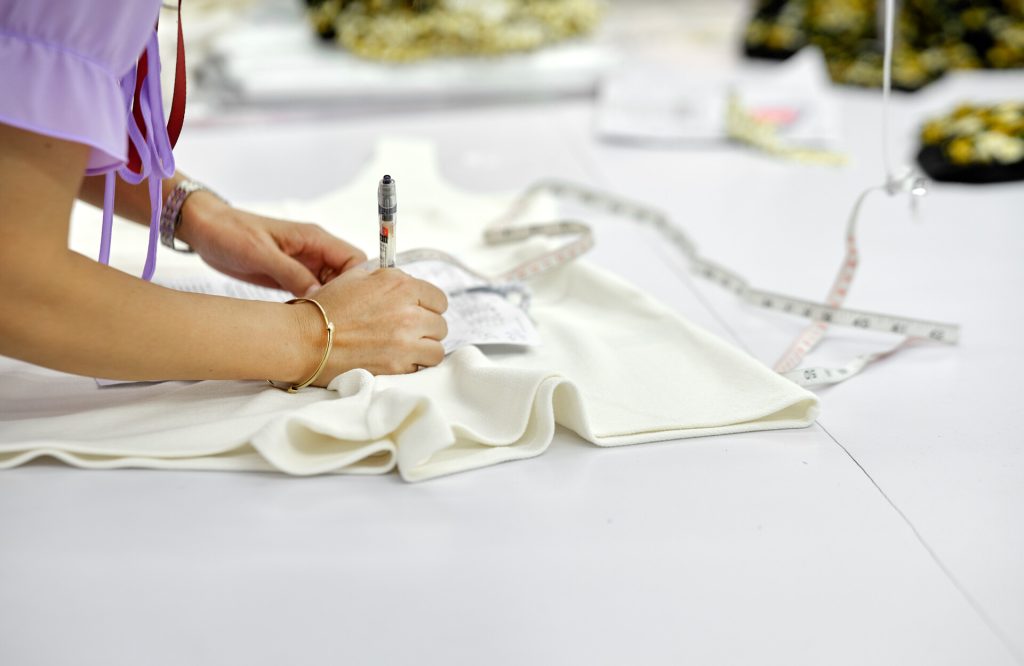By shifting towards a circular ecosystem we can address some of the biggest challenges facing our planet at this time such as climate change and biodiversity loss.
Our circular approach
For decades our industry has operated in a linear way – taking, making and wasting. It’s time to change. At H&M Group, we’re committed to reducing our dependence on virgin materials, achieving more with less and building a circular ecosystem to keep products and materials circulating at their highest value.
There is still a long way to go – for the entire industry – and we recognise the need for change at a system level. Our approach is aligned with the Ellen MacArthur Foundation’s (EMF) definition of a circular economy, which focuses on three key principles:
- Eliminate waste and pollution
- Circulate products and materials at their highest value
- Regenerate nature
For the fashion industry, this means products should be designed to be used more, made to be made again, and made from safe and recycled or renewable inputs.
A circular ecosystem
Our circular approach focuses on three interconnected areas that cover our products and services, supply chain, and non-commercial goods, such as packaging and store interiors, offices and distribution centres.
Circular products:
Creating products that are made to last from safe, recycled, regenerative or sustainably sourced materials, that can circulate multiple times.
Circular supply chains:
Building scalable systems that circulate products and materials for repair, reuse, remake and recycling that use lower impact production processes— such as dyeing, printing and finishing.
Circular customer journeys:
Providing convenient ways for our customers to engage in circular fashion where products are used more before being repaired, reused, remade and recycled.
Circular ecosystem in action
Building a circular ecosystem is a continuous journey with many interdependencies both within and outside H&M Group.
We are aligning supply and demand, and increasing material efficiency. We invest in AI and tech tools for improved planning and accuracy, and customer centricity.
We have developed circular design guidelines and are increasing circular design for our products and assortments so they can be used more, repaired, remade and recycled. For example, we follow quality standards and requirements, are increasing our use of Jeans Redesign Project and are testing circular design strategies for our products and collections.
Our goal is for 100% of our materials to be either recycled or sustainably sourced by 2030, including our ambition for 50% recycled materials. We test, invest in and scale more innovative materials through our brands, Circular Innovation Lab, H&M Group Ventures, and green investments — for example, investments in Infinited Fiber Company, TreeToTextile, and Fairbrics — and bridge the commercialisation gap through our supply chain network.
We test, invest in and scale innovative production processes that can lower use of water, energy and chemicals — such as dyeing, washing and finishing — through our brands, Circular Innovation Lab, H&M Group Ventures, and green investments. These include investments in Colorifix and Alchemie Technology, and investments in pilots such as with Recycrom.
We offer use and care advice, information, and products across our brands to prolong the life of our products.
We offer remake advice, information and services across our brands to prolong the life of our products — for example through COS Full Circle and its partnership with The Seam, H&M Take Care, and ARKET repair partners.
We increase access to, and invest in, piloting and scaling customer-facing circular business models (such as resell and rental) across H&M Group in stores and online. These include Sellpy, H&M preloved & rental, ARKET Archive, COS Full Circle, COS Restore and COS Resell, and in-store second hand at Weekday and Monki.
We support scaling technology and infrastructure to collect and sort products and materials — we collect used textiles at our brands and sort them so they can be circulated at their highest value for reuse and recycling.
We support scaling technology and infrastructure to recycle and circulate materials at their highest value. We invest in recycling technology and infrastructure with partners including Infinited Fiber Company and Ambercycle. We focus on textile waste in production, post–consumer textiles, and collaboration to advance progress
Putting people at the centre of circular fashion
We know a lot about the environmental impact of a circular fashion industry, but we have lots to learn about the impact on people, including understanding what it means for jobs across the fashion value chain.
In 2021, we worked with several partners on Keeping Workers in the Loop. This report looked at the impact on employment of moving to a circular fashion system and recommended how to create a just, fair and inclusive fashion industry. Since it was launched, we have worked with the report’s key learnings to build our knowledge and to define how we can secure fair and equal circular jobs across our value chain.
We publish our Sustainability Disclosure annually. In this document, we set out our goals and the progress we’ve made in the previous year. Find the latest version here. More up to date information can be included on this page.


